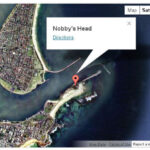WordPress is a versatile platform, but it doesn’t always meet everyone’s unique needs straight out of the box. That’s where custom functionality comes into play. Many people want to add custom functionality to WordPress using PHP but often feel overwhelmed by limited coding skills or WordPress’s constant updates. The good news? Whether you’re making small tweaks or building something entirely new, PHP gives you the flexibility to shape WordPress to fit your vision.
In this post, I’ll walk you through the Top 3 Ways to Add Custom Functionality to WordPress Using PHP. Along the way, I’ll share practical examples and touch on related techniques, tools, and common user questions.
 —————Recommendations; Please continue reading below————— Space-saving Furniture Shop Now
—————Recommendations; Please continue reading below————— Space-saving Furniture Shop Now
If you want to maximise space in your home, office or home-office with flexible furniture that collapses, folds, and stacks to fit every room, you can click here to see the wide range of space-saving furniture. Click here to learn more >>>
Why Customize WordPress with PHP?
WordPress powers over 40% of the web because of its flexibility. But not every site owner finds exactly what they need in pre-built themes or plugins. Using PHP, you can:
- Modify existing WordPress features.
- Add entirely new functionality.
- Create reusable content elements (like shortcodes).
- Build integrations with external tools.
 How To Create A Website Using WordPress: The Beginner’s Blueprint for Building a Professional Website in Less Than 60 Minutes
How To Create A Website Using WordPress: The Beginner’s Blueprint for Building a Professional Website in Less Than 60 Minutes
Have your very own website that looks, functions, and works better than 80% of the websites currently on the web
Just a few years ago, I could barely update my Facebook page; today I can build anything from an e-commerce website that sells products across the globe to a membership website for gardening enthusiasts. You name it, I can build it. And guess what? You can too. You will be able to build any type of website imaginable, and this will require ZERO programming skills.
Don’t Let Another Excuse Get In The Way Of You Building That Website You’ve Always Wanted
This book was written to bridge the gap that most people still think exist – the gap that use to isolate computer programmers from your average Joe. The one tool that has made this all possible is WordPress, an open-source content management system that can be operated by any computer literate person.
3 Key Ways to Add Custom Functionality to WordPress Using PHP
1. Use WordPress Hooks and Filters
Hooks and filters are built-in WordPress tools that let you:
- Run your code at specific points (hooks).
- Change data before it’s saved or displayed (filters).
For example, you can automatically add a “Read More” link to post excerpts using a filter:
php
2. Build Custom Plugins
If you want reusable features, a plugin is your best bet.
- Create a folder in
wp-content/plugins/. - Add a PHP file with a unique name.
- Include this code to register your plugin:
/* Plugin Name: My Custom Plugin Description: Adds a custom feature to WordPress. Version: 1.0 Author: Your Name */
Once active, you can add any custom functionality inside this file.
3. Create Custom Templates and Shortcodes
Sometimes, you need to customize how your content looks. Templates and shortcodes help you do that.
Templates
To build a custom page, add a template file to your theme folder. For instance, a custom “About Us” page might use about-us.php with this at the top:
/* Template Name: About Us */
Shortcodes
Shortcodes let you add reusable content anywhere on your site. Here’s how to create one:
function custom_shortcode() { return ‘<p>This is my custom content.</p>’; } add_shortcode(‘my_shortcode’, ‘custom_shortcode’);
Now, typing [my_shortcode] in a post will insert the custom content.
Advanced Options
If you’re feeling adventurous, explore these techniques:
- REST API Integration: Use external data or create an API endpoint.
- Custom Fields: Add meta fields to pages or posts for unique content.
- WooCommerce Customization: Adjust product pages or checkout flows with PHP.
FAQs
Can I add PHP code directly in WordPress?
Yes, but it’s not recommended for direct editing in core files. Instead, use the functions.php file in your theme or create a plugin.
What happens if I make a mistake in my code?
Errors in PHP can break your site. Use a staging environment or tools like WP_DEBUG to test before going live.
Do I need coding experience?
Some basic knowledge of PHP and WordPress is helpful, but you can start with small tweaks and build your skills over time.
Tips to Future-Proof Your Customizations
- Use Child Themes: Avoid losing changes when themes update.
- Follow Coding Standards: WordPress has guidelines to ensure compatibility.
- Keep Learning: Stay updated with WordPress trends, like block-based themes and Full Site Editing (FSE).
Wrapping It Up
Adding custom functionality to WordPress isn’t as intimidating as it seems. Start small. Experiment with hooks, shortcodes, or templates. Need more? Build plugins or explore the REST API.
Your site should reflect your unique needs. And with PHP, the sky’s the limit (almost). Just make sure you have backups before diving in!
Good enough? let’s make WordPress work the way you want it to.
Now loading...






